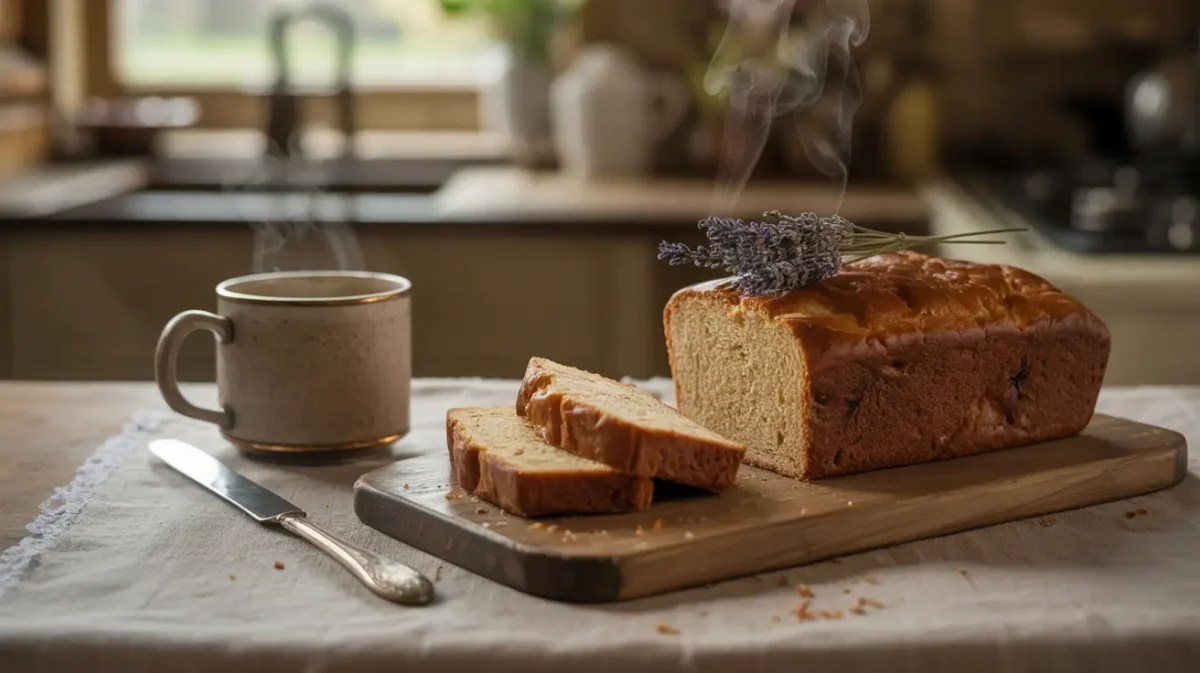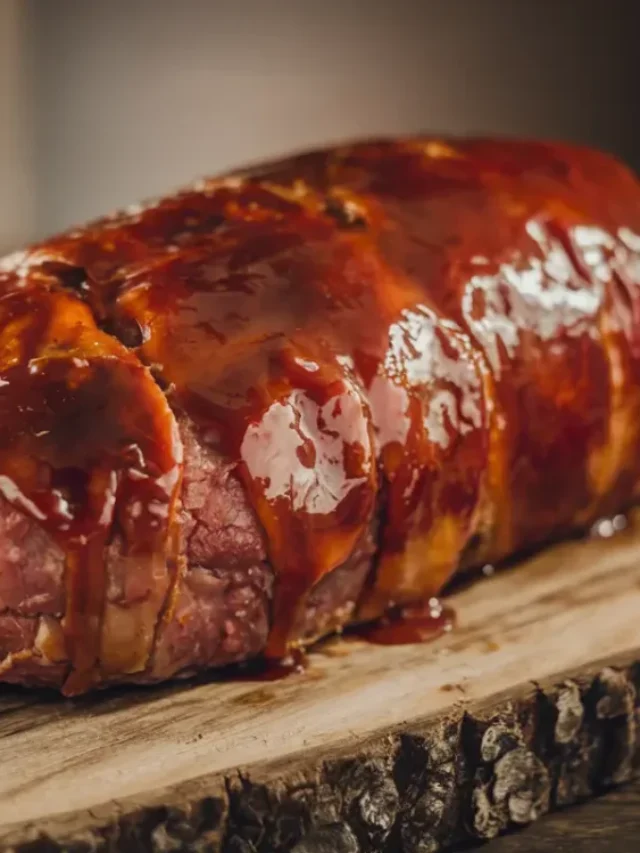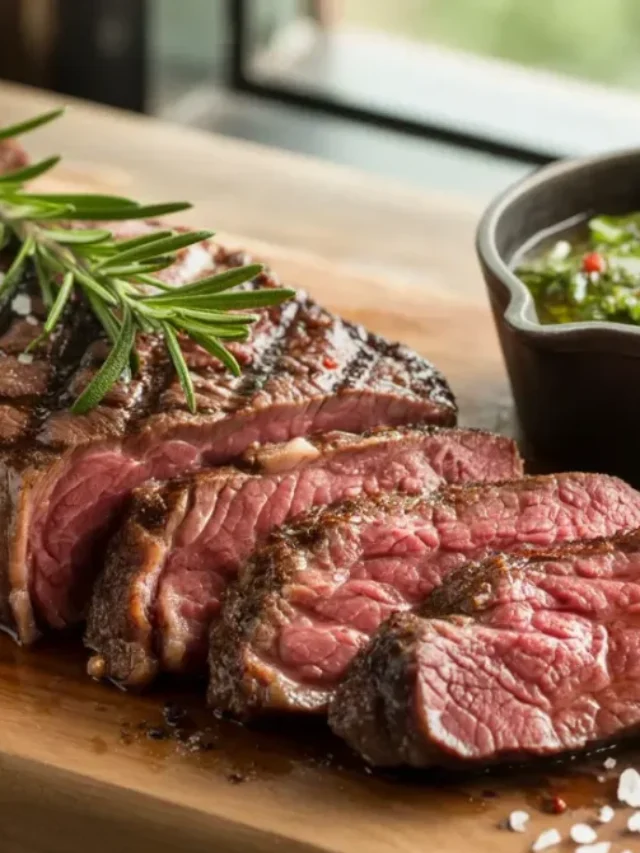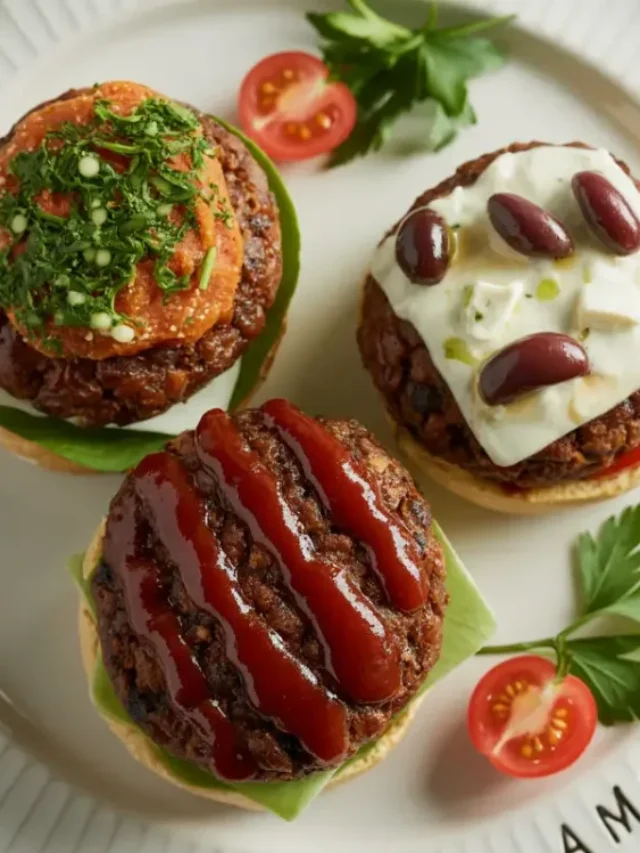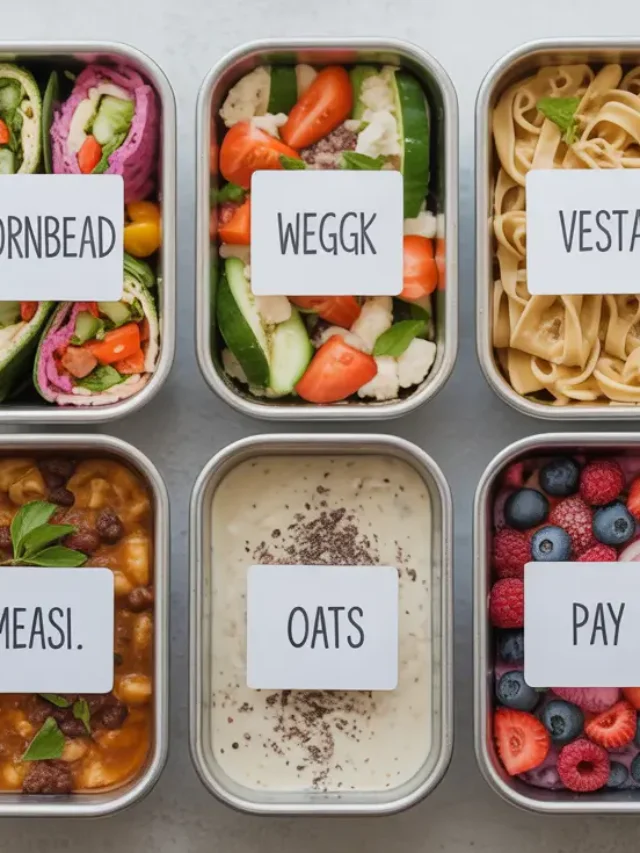Wartime Tea Loaf: A Slice of History and Comfort
Tucked away in the rich tapestry of British baking is a humble classic that quietly rose to fame during the most trying of times—the wartime tea loaf. Born from an era when resourcefulness wasn’t just encouraged, but essential, this moist, fruity loaf became a beloved staple in households across the UK.
In this article, we’ll take a comforting stroll down memory lane to explore what exactly a wartime tea loaf is, its simple yet clever ingredients, how to make it, and how it’s evolved over the decades. Whether you’re a curious foodie, a fan of vintage recipes, or simply craving a warm slice with your cuppa, this guide offers everything you need to know—plus answers to common questions people still ask today.
The Legacy of the Wartime Tea Loaf
What Is a Wartime Tea Loaf?
A wartime tea loaf is a sweet, fruit-packed bread that emerged during World War II. With ingredients like tea-soaked dried fruits, brown sugar, and a bit of flour, it stood as a clever solution to harsh rationing restrictions. Unlike traditional cakes, it required no eggs, no butter, and often no milk—just a bit of ingenuity and pantry basics.
Thanks to its moist texture and satisfying flavor, this frugal bake didn’t just feed families—it lifted spirits. Often compared to malt loaf or tea bread, it gained popularity for being both filling and flavorful, especially when served with a dab of margarine or jam.
Origins During Rationing
During WWII, ingredients like eggs and butter were tightly rationed, and home bakers had to get creative. Out of that hardship came the wartime tea loaf, which used what was available: dried fruits, brewed tea, and affordable flour. This dessert became a shining example of how to turn scarcity into satisfaction.
Recipes were shared on the radio, in ration booklets, and over garden fences. Housewives experimented with homemade loaf without butter, using black tea to add both moisture and flavor. It wasn’t just about survival—it was about preserving joy at teatime.
Traditional Ingredients and Substitutions
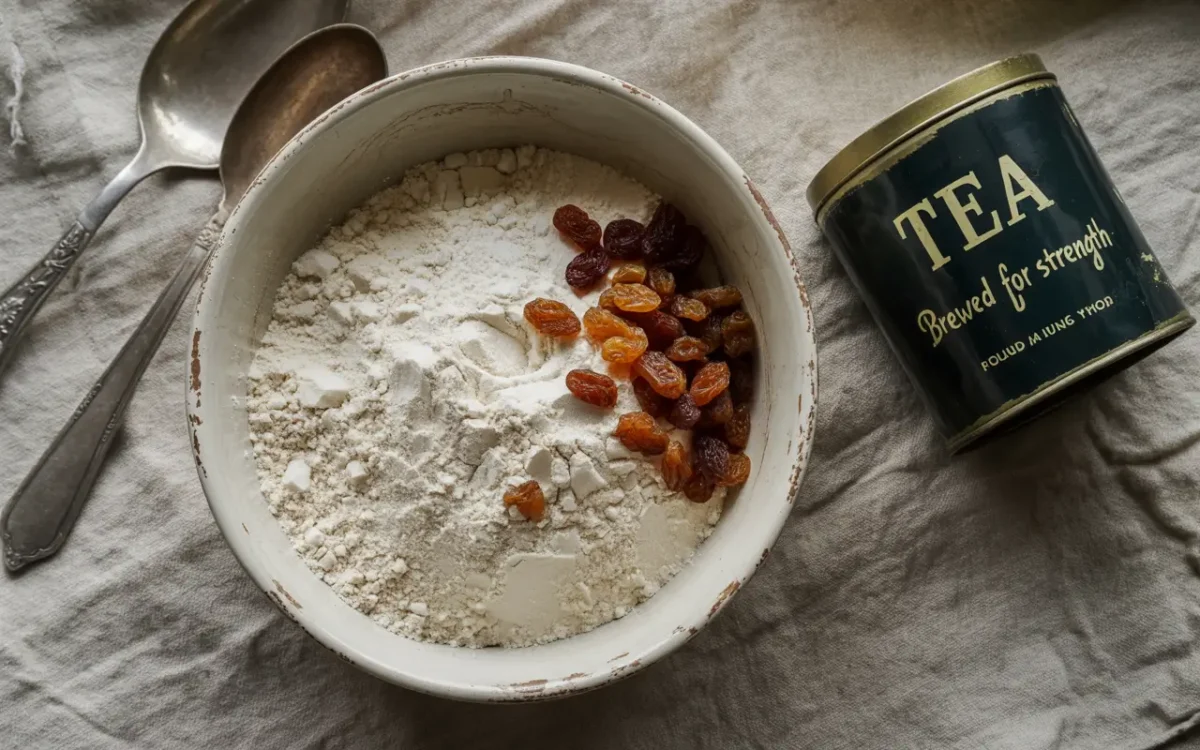
Common Wartime Ingredients Used in Tea Loaves
Back in the day, making a wartime tea loaf meant working with the bare essentials. Eggs, butter, and fresh milk were either too expensive or tightly rationed. But that didn’t stop British home bakers from whipping up magic in their kitchens. Instead, they turned to tea-soaked dried fruits (like raisins or sultanas), self-raising flour, brown sugar, and margarine. The tea wasn’t just a flavor booster—it acted as a natural softener for the dried fruit, making every slice extra moist.
Because it relied on simple pantry staples, this loaf became a classic frugal baking recipe. It’s a perfect example of how clever substitutions, even under pressure, can create something timeless and tasty.
Modern Substitutions for a Healthier or Vegan Twist
Nowadays, we’ve got options. You can swap out brown sugar for coconut sugar, replace margarine with coconut oil or plant-based butter, and even use wholemeal flour for extra fiber. Want to spice things up? Add a pinch of cinnamon or nutmeg for warmth.
For a vegan version, you’re already most of the way there—just make sure your sugar and margarine are plant-based. Bonus points if you serve it with homemade jam or fruit compote, like this baked apple fritters recipe that complements a tea loaf perfectly.
Step-by-Step Wartime Tea Loaf Recipe

Preparation: Soaking, Mixing, and Baking
Ready to get baking? Here’s a simple wartime tea loaf recipe that sticks close to its roots. Start by soaking 1½ cups of mixed dried fruit in hot black tea—about 1 cup brewed strong. Let it sit overnight or for at least 4 hours. The longer, the better!
Next, combine the soaked fruit (with the tea), 1 cup of brown sugar, and 2 cups of self-raising flour. Stir until just combined. You can also fold in a few chopped walnuts or dates for texture.
Pour the mixture into a greased loaf pan and bake at 350°F (180°C) for about 50 minutes. A skewer should come out clean when it’s done. Let it cool before slicing.
Tips for the Perfect Slice
To get the best flavor, let your loaf rest for 12–24 hours after baking—it allows the moisture and spices to settle. Slice thickly, toast if you like, and top with a thin layer of butter, marmalade, or even soft cheese. It’s also delicious paired with a warm drink, making it a cozy alternative to modern pastries or a perfect side to hearty mains like chicken pot pie casserole.
Variations Through the Ages
From Yorkshire Tea Loaf to Persian-Inspired Versions
While the original wartime tea loaf was born out of necessity, bakers quickly got creative with it. In Yorkshire, the tea loaf became slightly sweeter and was often served with a thick wedge of cheddar. Over time, spices like cinnamon, ginger, and nutmeg were added, and nuts such as walnuts or almonds gave the loaf extra crunch.
Some modern bakers have gone global—adding ingredients like rosewater or cardamom for a Persian twist. Whether you stick to the roots or switch it up, this frugal loaf continues to evolve in delicious ways.
How the Tea Loaf Has Evolved Post-War
After wartime ended, ingredients like butter and eggs became more available. As a result, versions of tea loaf began to resemble rich fruit cakes or even breakfast bread. Still, many people hold on to the traditional eggless recipe, not only for simplicity but for nostalgia too.
For more delicious vintage-inspired recipes, check out our collection at Hightasty.com. You’ll find comforting dishes that pair beautifully with a warm slice of tea loaf.or golden-syrup-loaf-cake.html
Why It’s Still Loved Today
A Symbol of Resilience and Simplicity
The wartime tea loaf stands as more than just a treat—it’s a tribute to resilience. It reminds us how joy can bloom even in hard times, and how food can connect us across generations. Its simple ingredients make it both budget-friendly and deeply comforting.
Perfect for Modern Meal Prep or Budget Baking
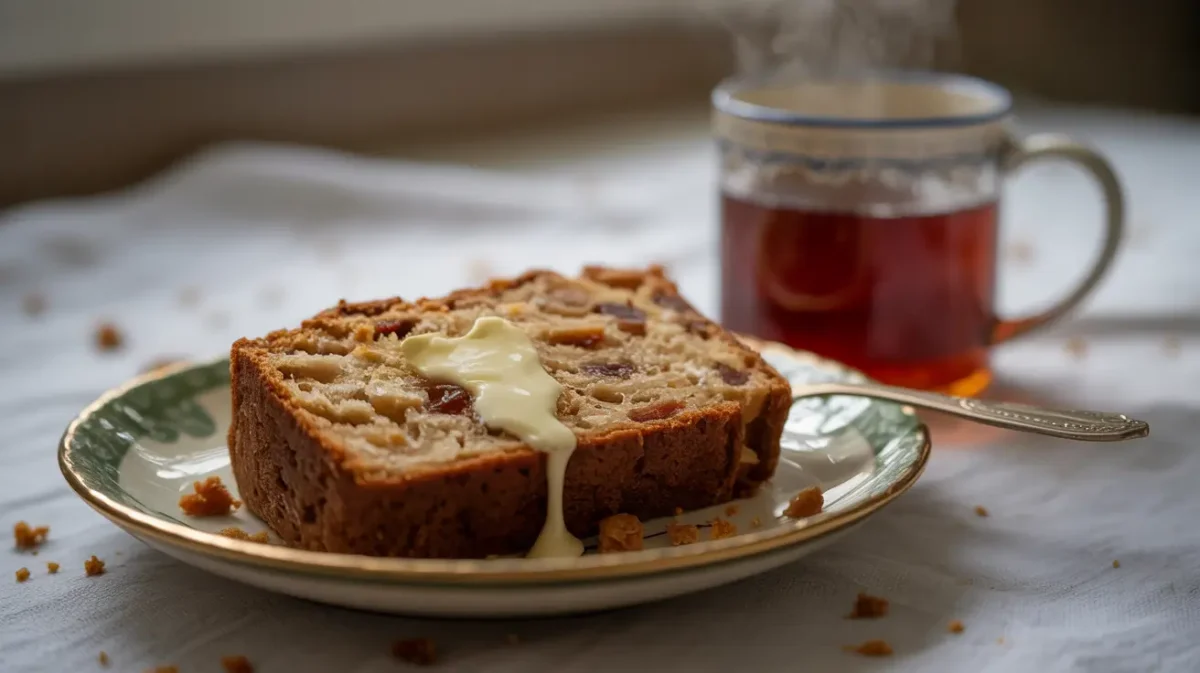
Let’s be real—who doesn’t love a make-ahead, no-fuss bake? Whether you’re prepping for the week or baking on a budget, the wartime tea loaf is still relevant. It stores well, slices easily, and brings back that nostalgic charm with every bite.
FAQs About Wartime Tea Loaf
What was the national loaf in the wartime?
During WWII in Britain, the government introduced the national loaf—a wholemeal bread baked in long, thick loaves. It was a response to white flour shortages and aimed to stretch food supplies. Unlike the wartime tea loaf, which was sweet and comforting, the national loaf was dense, dry, and often unpopular.
What is a tea loaf in English?
In English baking, a tea loaf refers to a moist, fruit-filled bread often enjoyed with a cup of tea. The wartime tea loaf is a classic version that uses soaked dried fruits and brewed tea to add flavor without relying on rich ingredients.
What is the history of tea brack?
Tea brack is an Irish cousin of the tea loaf. It dates back centuries and features dried fruits soaked in tea, similar to the wartime tea loaf. Both reflect traditions of making the most with what you’ve got—humble, hearty, and homey.
Why is it called tea bread?
It’s simple: the name comes from the fact that the dried fruits are soaked in strong tea before baking. This not only softens them but adds depth and aroma. Over time, these bakes became known as tea bread or tea loaf—especially in wartime kitchens across the UK.
A Slice of the Past That Still Feeds the Soul
Though born from hardship, the wartime tea loaf continues to bring warmth and nostalgia to modern kitchens. Its simplicity, budget-friendliness, and delicious results make it a timeless recipe worth revisiting. Whether you bake it for comfort, curiosity, or cost, you’ll taste a bit of history in every slice.
So next time you want something sweet and simple, try this iconic loaf. It’s more than a recipe—it’s a story baked into every bite.

